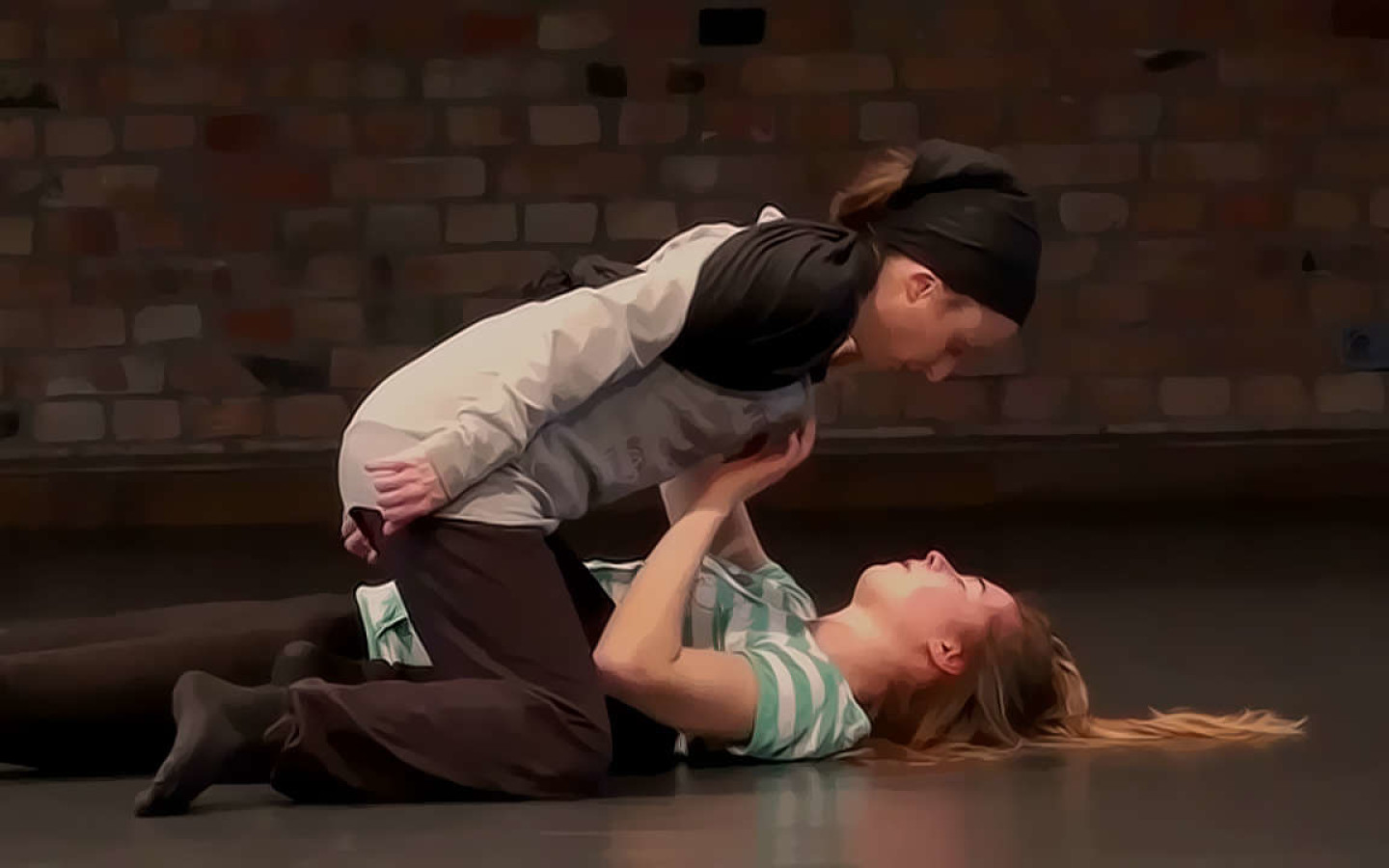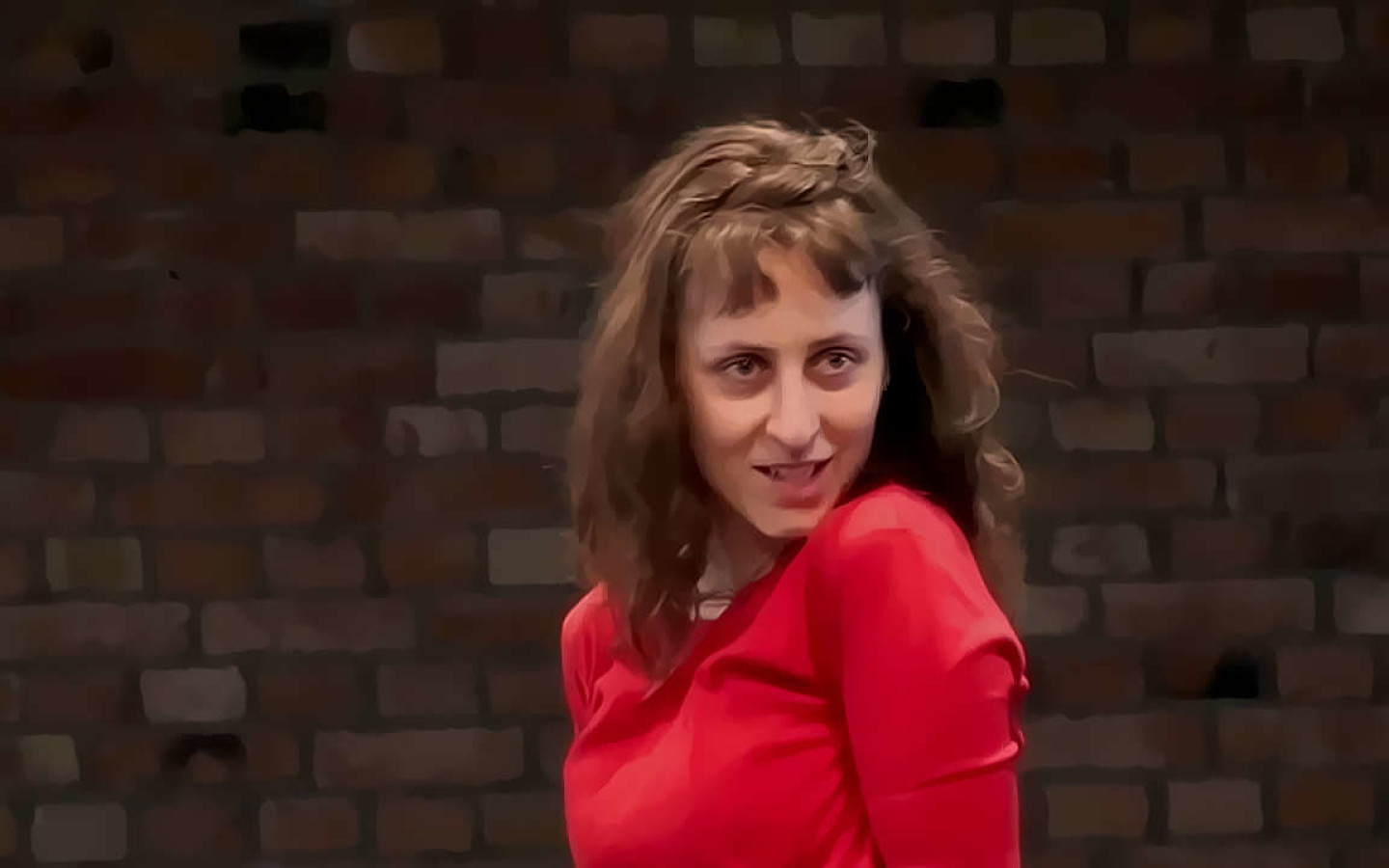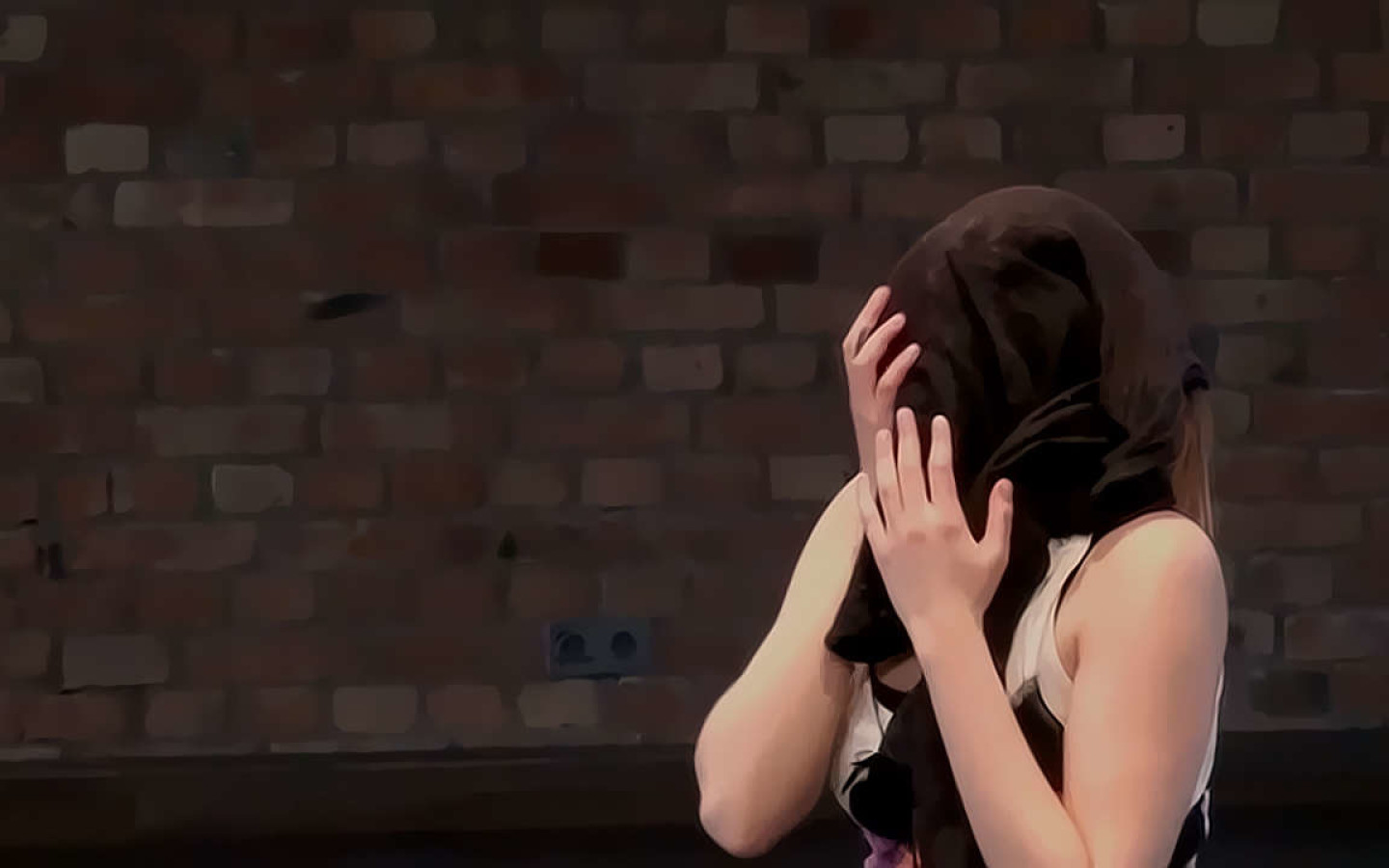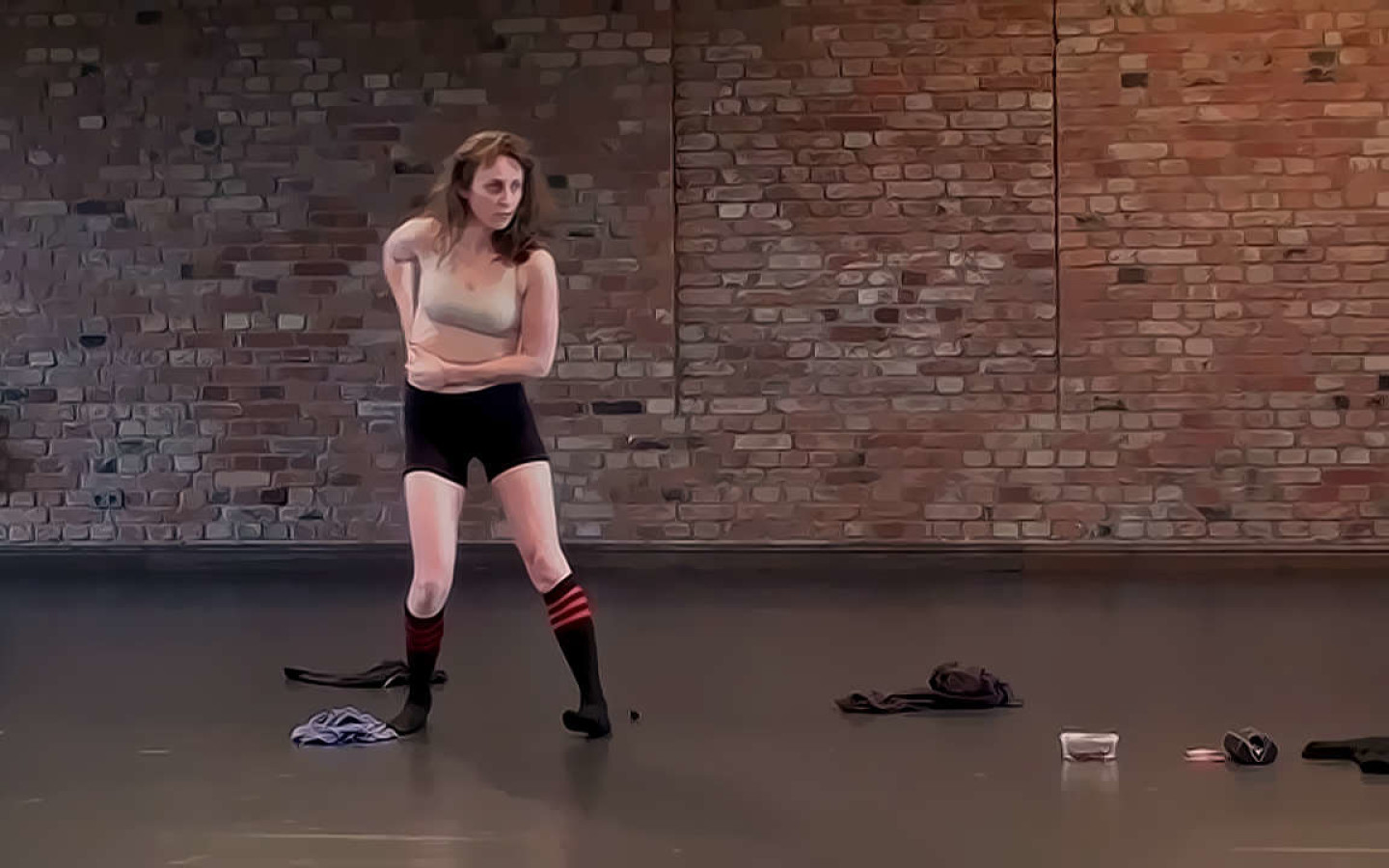Carlos Rodero & Jobbágy Bernadett
Physical in the Performing Arts
Physical Theatre Workshop for Dancers
02-06.04.2013 / Studio Słodownia +3
OUTLINE
Practice and approach to the basis for understanding physical language training as the main engine of the dramaturgy in theatrical performance.
Physical theatre is a catch-all term used to describe any mode of performance that pursues storytelling through primarily physical means. There are several quite distinct traditions of performance which all describe themselves using the term physical theatre, which has led to a lot of confusion as to what the definition of physical theatre actually is.
While performances based around all techniques of body movement could equally claim to be Physical Theatre, the key distinguishing factor is a focus on narrative, character and storytelling. However, it is often difficult to draw a distinct boundary between what is and what is not physical theatre, and distinctions are often made quite arbitrarily by critics and performing companies.
Modern Physical Theatre has grown from a variety of origins. Mime and theatrical clowning schools such as L’Ecole Jaques Lecoq in Paris have had a big influence on many modern expressions of physical theatre, and practitioners such as Steven Berkoff and John Wright received their initial training at such institutions. Eastern European practitioners have also had a strong influence on modern physical theatre, and both Vsevolod Meyerhold and Jerzy Grotowski are regarded by many as fathers of modern physical theatre and the following work of Mikhail Chekhov. Contemporary Dance has also had a strong influence on what we regard as physical theatre, partly because most physical theatre requires actors to have a level of physical control and flexibility rarely found in those who do not have some sort of dance background.
PARTICIPANTS
The workshop is addressed to professional dancers or dance students with a basic knowledge and minimum experience who aim to go beyond the borders of contemporary dance and have the will to try out the possibilities that physical theatre can offer them to build up a dramaturgy based on the body.
We pleasantly will study all the applications and after the first part of Session 1 will decide which candidates match better with the aims and characteristics of the workshop.
AIMS
The aim of the course is to engage participants in practical methods and skills in the creation of physical theatre practice. We will experiment with a variety of aspects of the physical theatre work to include movement, dynamic speech, object integration, media usage and sound. Training will primarily be through experiential workshops with participants given tasks for improvisation and exploration. The workshop will promote dynamic activity; with time to both experiment practically and to respond with detailed feedback.
The dramaturgy of physical theatre will be built upon throughout the course so that aspects of developing narrative, working with text and voice, set, props or multi-media will be incorporated. Towards the end of the training period you will work to create studio-based compositions which reflect the physical and vocal skills that have been developed.
The target is that each performer finds and follows his own style.
For this we give concrete tools first lead into practice and implement the result for later analysis.
We emphasize the fusion of mind and emotion to the concept of the physical.
METHODOLOGY
Through physical and emotional warming up thought to drive the creation of the performers on stage and a series of exercises that are a bridge to lead and develop dramatic situations from the body’s energy.
A structure for theatrical training and development. A model to develop both hemispheres of the brain in balance. Perception; in the creation, development and presentation of theatrical imagery. Acknowledging the equal importance of text and action inhabiting the theatrical space. Actively engaging the participant in the creative process, developing his or her own theatrical voice, discovering originality, and developing the means for its expression.
Including the mechanics of physical perception, discovering from the inside out, the architecture of the skeleton, the play of the muscles in movement and stillness, breathing, and the body’s physical relationship to the theatrical space.
Including the mechanics of physical perception, discovering from the inside out, the architecture of the skeleton, the play of the muscles in movement and stillness, breathing, and the body’s physical relationship to the theatrical space.
The study of movement in action. The circle, economizing and directing energy, focus and support. Experiencing the body moving through space. Overcoming passive resistance, not to train actors who tumble and do cartwheels, but to train artists to have the courage and ability to stand ideas and our civilization’s sacred cows on their heads, and have the freedom to let their imaginations and their bodies soar.
Structuring discovery to enable the artist to encounter the theatre as a medium, igniting the creative fire in his or her belly, and putting the two together in the theatrical space. The voyage with an experienced guide travelling with the participant into the known and the unknown, each bearing witness to the others. Gradually the landmarks of this voyage take on significance, the voyage becomes clear, structured, and specific, and a direction is chosen. Tactics in improvisation, the masks of suspension, evolution, and expression, an identification with the everyday and the natural world, characterization, passions, music, and text, all frame the voyage.
CONTENTS & TECHNIQUES
- Framing The Body
- Creating & Relationship with Space
- Imageworking & Body Expression
- Improvisation
- Body & Video Projections
- Butoh & Clown Exercise
length
one week (5 Sessions) From 2nd to 6th April
sessions
6 hours (from 10,00 to 16,00)
structure
part 1: Warming up (40 minutes)
part 2: Planning and developing of Exercise 1 (1 hour 45 minutes)
Break (20 minutes)
part 3: Planning and developing of Exercise 2 (1 hour 45 minutes)
Break (20 minutes)
part 4: Analysis and Evaluation (1 hour)
special needs
Participants should come with sport clothes
With the support of Visegrad Fund
[Youtube_Channel_Gallery feed=”playlist” user=”PLsCjMa0-XJyPLHxzCcBpoNQIs6mxSFFHB” key=”AIzaSyCbbeJa4_6LG9UpqCfaQWzuV0qRIaK5HJg” maxitems=”16″ thumb_columns_ld=”2″ title=”0″ cache=”0″]
Art Stations Foundation
Stary Browar Nowy Taniec
Open Showing









































